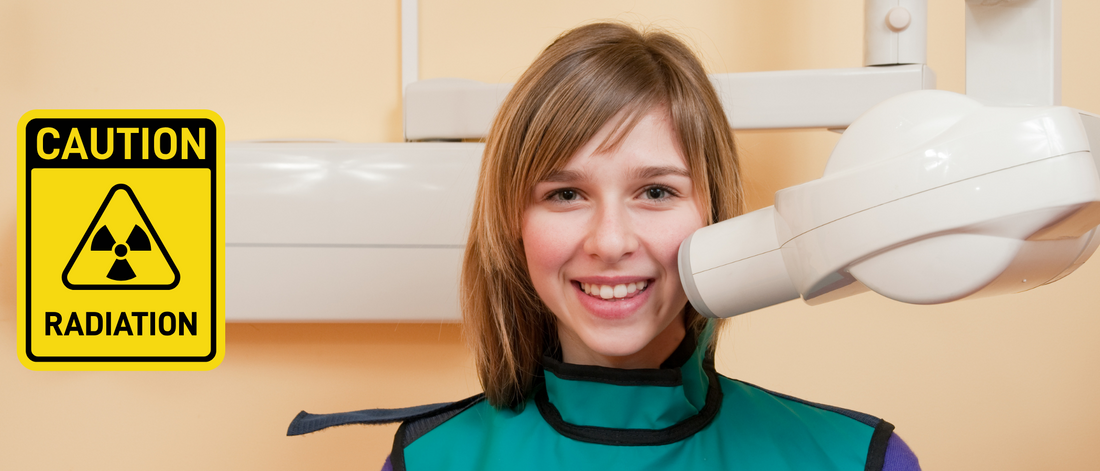Cone Beam Computed Tomography (CBCT) has revolutionized the field of dentistry, providing accurate three-dimensional imaging for diagnosis and treatment planning. However, ensuring patient safety and minimizing radiation exposure are crucial considerations. Each state in the United States has specific regulations and guidelines regarding CBCT radiation exposure. In this article, we will explore common CBCT exposure practices that prioritize patient safety and compliance with state-specific regulations.
Importance of Patient Safety in CBCT Exposure:
CBCT technology offers valuable diagnostic information, but it is essential to balance this with minimizing radiation exposure. By following best practices for CBCT exposure, dental professionals can ensure patient safety while obtaining accurate images for diagnosis and treatment planning.
Common CBCT Exposure Practices:
- Patient Positioning and Shielding: Proper patient positioning is critical to capture accurate images while minimizing radiation exposure to non-target areas.
- Collimation and Field of View (FOV): Collimation allows limiting the X-ray beam to the specific area of interest, reducing unnecessary radiation exposure to surrounding tissues. Select the appropriate FOV based on the diagnostic requirements, ensuring it is neither too large nor too small for the intended purpose.
- Optimization of Exposure Parameters: Optimize exposure parameters, such as kilovoltage (kVp), milliamperage (mA), and exposure time, to achieve the desired image quality while minimizing radiation dose. Adjust these parameters based on patient size, age, and diagnostic needs to strike the right balance. Most equipment has manufactured settings to help with age and weight dynamics.
- Image Rejection and Retakes: Review acquired CBCT images immediately to assess their diagnostic quality. If images are compromised due to motion artifacts, positioning errors, or technical issues, consider retaking the scan instead of relying on suboptimal images. Maintaining diagnostic quality is crucial to avoid unnecessary repeat exposures.
The Importance of Low-Exposure CBCT Technology:
In recent years, advancements in CBCT technology have focused on reducing radiation dose without compromising image quality. Low-exposure CBCT systems have emerged as a crucial development, aiming to strike a balance between diagnostic accuracy and patient safety. These advancements have been driven by the realization that excessive radiation exposure poses potential risks.
Statistics on Low-Exposure CBCT:
Studies have shown that low-exposure CBCT imaging significantly reduces radiation dose compared to traditional CT scans while maintaining diagnostic efficacy. For example, a study published in the Journal of Endodontics demonstrated that low-exposure CBCT imaging resulted in a 77% reduction in effective dose compared to conventional CT scans for endodontic purposes. Furthermore, research has indicated that the adoption of low-exposure CBCT technology has led to a considerable decrease in radiation exposure for patients. A study published in the Journal of Dental Research analyzed radiation doses from various imaging modalities and found that CBCT scans had a significantly.
These statistics highlight the importance of integrating low-exposure CBCT technology into dental practices. By utilizing these advanced systems, dentists can obtain the necessary diagnostic information while significantly reducing radiation exposure for their patients. This approach aligns with the principles of ALARA, emphasizing the importance of minimizing radiation dose without compromising diagnostic quality.
By implementing low-exposure CBCT protocols and following best practices for radiation safety, dental professionals can prioritize patient well-being while complying with state regulations. It is crucial for dentists to stay updated on advancements in CBCT technology and familiarize themselves with their respective state's guidelines to ensure optimal patient care and safety.
Navigating State Regulations - Texas as an Example:
Texas has established specific regulations for CBCT radiation exposure, overseen by the Texas Department of State Health Services (DSHS). Dentists in Texas should be aware of the following considerations:
- Licensing and Training: Hold a dental license issued by the Texas State Board of Dental Examiners to operate CBCT equipment. Dentists and staff involved in CBCT operations should receive appropriate training on radiation safety and handling.
- Equipment Registration: Register all CBCT machines with the DSHS, which involves applying, providing compliance documentation, and paying the necessary fees. Regular inspections and quality assurance tests may be conducted to ensure ongoing compliance.
- Equipment Performance Evaluation (EPE): Conduct an Equipment Performance Evaluation (EPE) for CBCT machines as required by the Texas regulations. The EPE involves assessing the performance and calibration of the CBCT equipment to ensure accurate and reliable imaging. Dentists must comply with the specific EPE requirements outlined by the Texas DSHS, which may include periodic testing and documentation.
- ALARA Principle: Adhere to the ALARA principle (As Low As Reasonably Achievable) for CBCT radiation dose optimization. Use appropriate protocols, equipment settings, and protective measures to minimize radiation exposure while maintaining image quality.
Conclusion:
Navigating state regulations on CBCT radiation exposure is crucial for dental professionals to ensure patient safety and regulatory compliance. By following common CBCT exposure practices, such as proper patient positioning, and optimization of exposure parameters.
Cited:

